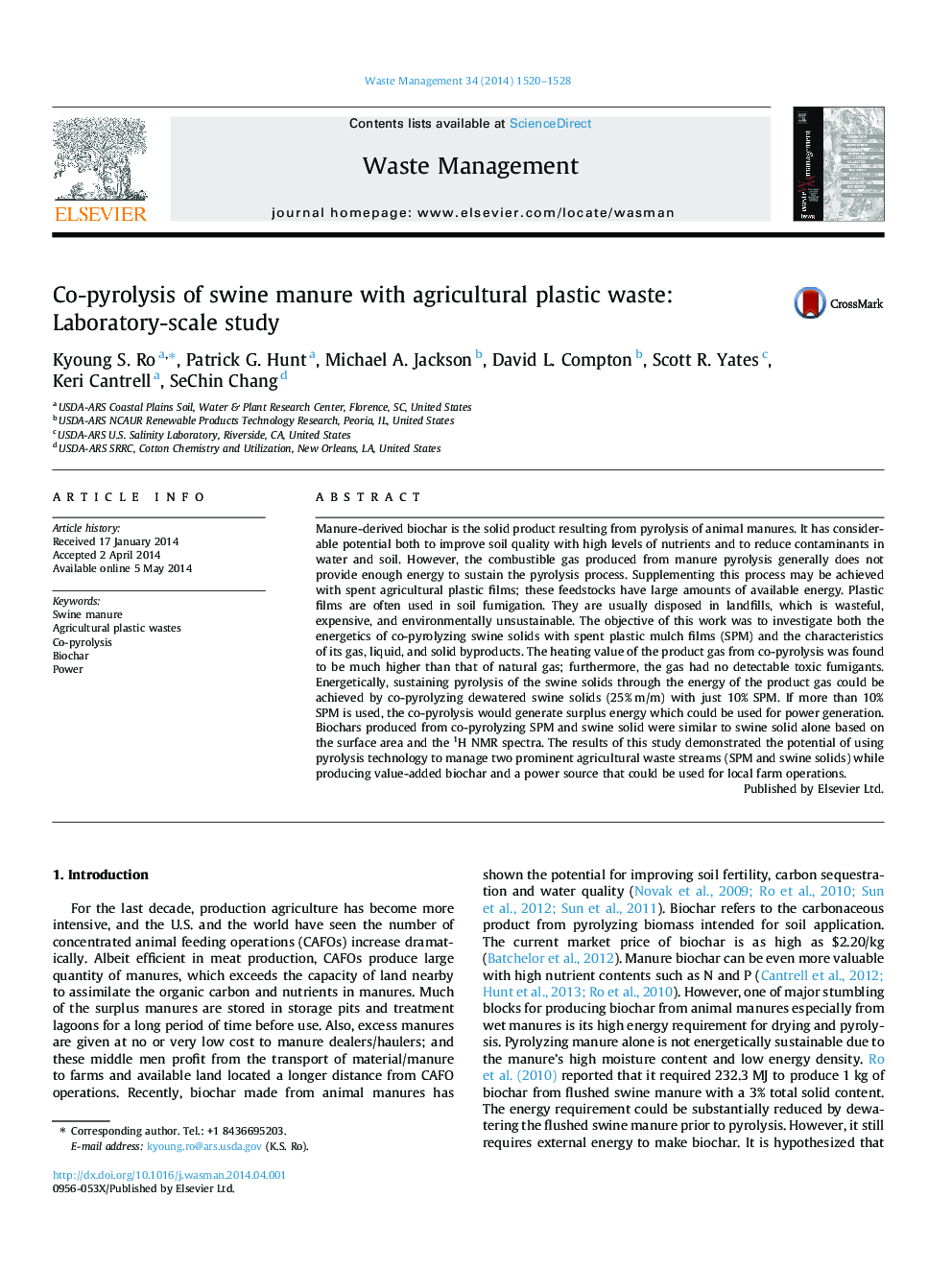| کد مقاله | کد نشریه | سال انتشار | مقاله انگلیسی | نسخه تمام متن |
|---|---|---|---|---|
| 4471504 | 1315030 | 2014 | 9 صفحه PDF | دانلود رایگان |
• Swine solids and spent plastic mulch film were co-pyrolyzed in a bench-pyrolysis system.
• We found that produced gas has heating value greater than that of natural gas.
• Biochar from co-pyrolysis of the mixed feedstock was similar to that produced from pyrolysis of swine solids alone.
• Co-pyrolyzing swine solids with just 10% plastic mulch film would produce enough gas energy to support the pyrolysis.
• Pyrolysis provides good potential to manage two agricultural waste streams while producing value-added biochar and power.
Manure-derived biochar is the solid product resulting from pyrolysis of animal manures. It has considerable potential both to improve soil quality with high levels of nutrients and to reduce contaminants in water and soil. However, the combustible gas produced from manure pyrolysis generally does not provide enough energy to sustain the pyrolysis process. Supplementing this process may be achieved with spent agricultural plastic films; these feedstocks have large amounts of available energy. Plastic films are often used in soil fumigation. They are usually disposed in landfills, which is wasteful, expensive, and environmentally unsustainable. The objective of this work was to investigate both the energetics of co-pyrolyzing swine solids with spent plastic mulch films (SPM) and the characteristics of its gas, liquid, and solid byproducts. The heating value of the product gas from co-pyrolysis was found to be much higher than that of natural gas; furthermore, the gas had no detectable toxic fumigants. Energetically, sustaining pyrolysis of the swine solids through the energy of the product gas could be achieved by co-pyrolyzing dewatered swine solids (25% m/m) with just 10% SPM. If more than 10% SPM is used, the co-pyrolysis would generate surplus energy which could be used for power generation. Biochars produced from co-pyrolyzing SPM and swine solid were similar to swine solid alone based on the surface area and the 1H NMR spectra. The results of this study demonstrated the potential of using pyrolysis technology to manage two prominent agricultural waste streams (SPM and swine solids) while producing value-added biochar and a power source that could be used for local farm operations.
Journal: Waste Management - Volume 34, Issue 8, August 2014, Pages 1520–1528
